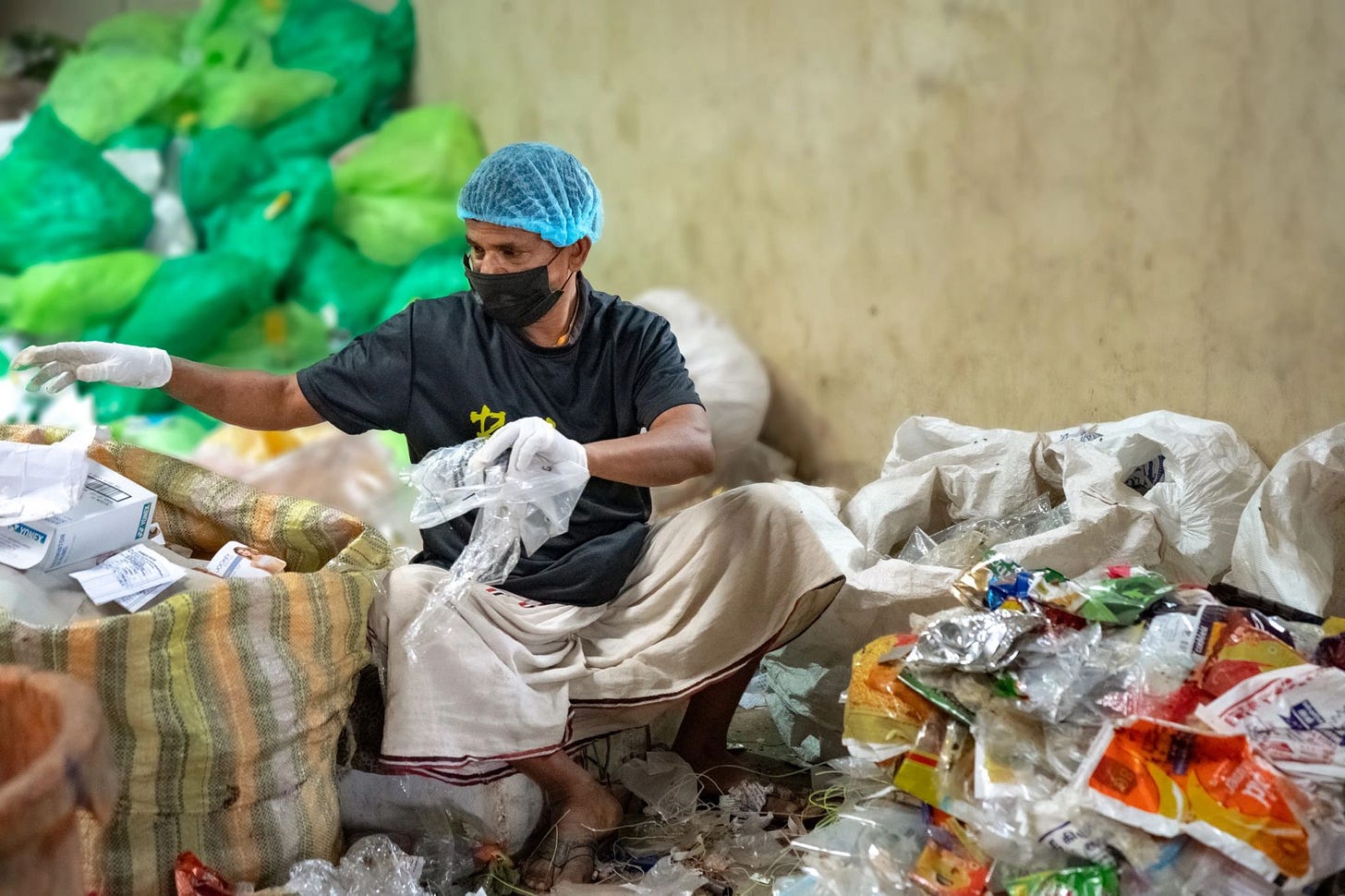1 Crore vs 7000 Crores
One is the marketing budget; one is the EPR budget - which is which?
1 crore versus 7000 crores.
Take a guess. 👇
One is a brand's advertising budget.
Another is a brand's EPR budget.
No prizes for guessing which is what.
There's a massive disconnect between how much brands spend on advertising their products and how much they invest in managing the waste they create.
Let's dive into the staggering figures:
₹45,000 Crore: In 2023 alone, India's top 10 advertisers spent a whopping ₹45,000 crore (around $5.6 billion) solely on advertising and marketing.
₹1,200 Crore: A single IPL (Indian Premier League) sponsorship deal can easily cost a brand a staggering ₹1,200 crore (around $1.5 billion).
₹300 Crore: Launching and marketing a new product can devour another ₹300 crore (around $375 million).
The EPR Enigma:
Now, let's contrast this with Extended Producer Responsibility (EPR), which holds producers financially responsible for the lifecycle of their products, including post-consumer waste management.
₹7,000 Crore: A stark contrast – India's total EPR spending is estimated to be a mere ₹7,000 crore (around $87.5 million), a fraction of what's spent on advertising.
The Plastic Problem:
This imbalance has dire consequences. India generates a significant amount of plastic waste:
33 Lakh Tonnes: In 2022 alone, India's plastic packaging waste was estimated at a staggering 33 lakh tonnes (3.3 million metric tons).
The Cost of Responsibility:
₹0.60-1.2/kg: The average EPR cost per kilogram of plastic waste that is being offered is around 60 paise to 1.2 rupees. Brands concerned with traceability and transparency offer higher.
The Bottom Line:
With such a low EPR budget compared to the vast amount of plastic waste generated and the minimal cost per kilogram for proper management, current efforts are simply insufficient.
It's a drop in the ocean compared to the tidal wave of plastic pollution.
This situation demands a fundamental shift.
Which is why the new EPR norm that the CPCB has proposed has the minimum cost of EPR (for plastic) to be Rs. 1.5 and a maximum of Rs. 5.
Brands need to:
Prioritize Sustainability: Invest more in responsible packaging design, waste management solutions, and robust EPR programs.
Focus on Circularity: Explore reusable or refillable packaging options to minimize waste generation at the source.
Consumer Education: Partner with consumers to promote responsible waste disposal practices.
By bridging the gap between advertising budgets and EPR spending, we can move towards a more sustainable future.
Let's not just market products – let's take responsibility for their entire lifecycle.
Do it right, or don't do it at all.
Agree?
______
If you want to do EPR right, reach out to us at epr@cerclex.com or simply book a discovery call.



